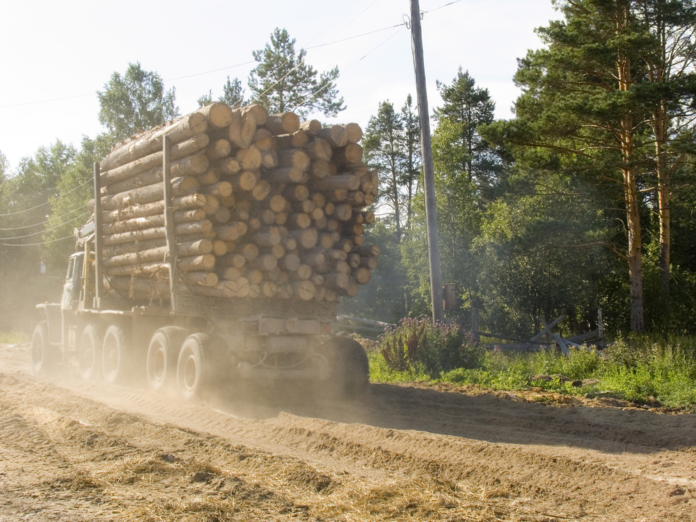It takes much longer to grow a tree than it does to cut it down, so without sustainable forest management, timber harvesting can only ever be a dying trade. An effective timber harvesting process takes thought, care, and time to plan. But it can also mean a renewable source of timber, enhanced biodiversity, and more climate protection. Here’s how the process works.
Everything You Need to Know About the Timber Harvesting Process
The Principles of Effective Harvesting
Tree cutting is often seen as a bad thing, but the truth is that all trees die. Nature also has ways of creating disturbance to make sure that forests thrive and regenerate. A good harvesting process means healthier forests and more diversity. It also offers the chance to make better use of a resource that is renewable and ecologically sound.
The specific aims of timber harvesting depend on the region and species, but they might include:
- Harvesting trees before they pass their optimal health
- Maintaining a habitat for wildlife
- Removing old and diseased trees
- Maintaining optimal density for plants according to species and age
- Increasing fire resistance
- Encouraging regeneration of certain species
- Consideration of other social and economic activities in the area
A good harvesting process meets the needs of the trees and forests precisely, ensuring a healthy and diverse environment.
The Process of Timber Harvesting
There are four basic steps in the harvesting process: planting, preparation, harvesting, and post-harvesting.
Planting
To harvest quality timber, it’s important to make sure that enough trees are available to counter the effects of deforestation. This also includes restoring degraded forest areas. Through the Re-aforestation Project, Cameroon Timber Export Afotimber Ltd has reforested many areas, including 100ha of the Barakese Dam catchment area. It has also replanted 350ha of the Tain II degraded forest reserve at Nsoatre with teak.
Preparation
In this stage, high-precision topographical maps help to identify the most important natural and man-made features in the area. A forest inventory is drawn up to show the volume of timber and the species composition in a forested area. Stock mapping and tree tagging identify desirable plants, and logging routes are considered.
An ethical company will also identify areas and species for conservation. This includes protecting CITES-listed species and acting in accordance with local and national laws.
Harvesting
Some of the considerations of effective harvesting are:
- Timing the harvesting operation
- Constructing roads and logging routes
- The use of appropriate tools
- The education and safety of personnel
- The directional felling of trees
These ensure that harvesting is safe, and completed with minimal impact on the surrounding vegetation or wider environment.
Another important factor to consider with harvesting is how much it impacts other uses of the forest. Effective harvesting minimizes the impact and disruption of logging on nearby communities. It should also allow recreational uses such as camping, sport, and tourist activities to continue.
Post-Harvesting
Once an area has been harvested, the routes and trails are closed to stabilize the ground. Quarries are drained, camps are cleaned up, and vegetation is restored. A report is drawn up to check the condition and inventory of the forest post-harvest.
Timber Harvesting Practices
There are different methods of harvesting timber. The benefits, drawbacks, and risks of each one are considered carefully for the timber harvesting process. The right choice is informed by the needs of different species. Trees that can germinate and thrive in the shade, for example, need a more selective approach that maintains canopy cover. But some varieties enjoy full sun and benefit from wholesale clearance.
Clearcutting
This involves clearing all the vegetation from an area. It is good for species that need full sunlight to grow. It also imitates the effects of a natural disaster that might clear the forest for regrowth, such as wildfires or insect outbreaks. But when it is practiced unsustainably, it leads to forest degradation.
Shelterwood
Shelterwood harvesting takes place when the forest is removed in different stages. It coordinates the removal to ensure the best conditions for regeneration and continuing fertility of the soil and is good for trees that are tolerant of the shade.
Selective
Selective harvesting involves removing a limited number of trees of legal diameter. It reduces the density of the forest and makes sure that the canopy allows for enough light to speed up the growth of seedlings and undergrowth. It also ensures the removal of trees before they become old or unhealthy. This allows the forest to regenerate naturally.
With sound harvesting practices, forests can continue to provide us with sustainable resources and ecological benefits. Timber harvesting can be used as a tool for regeneration and reforestation if ecological sciences are carefully applied, and the needs of the different species and ecosystems are taken into account. With effective selective timber harvesting, we can ensure a ready supply of quality wood and thriving forests for years to come.











